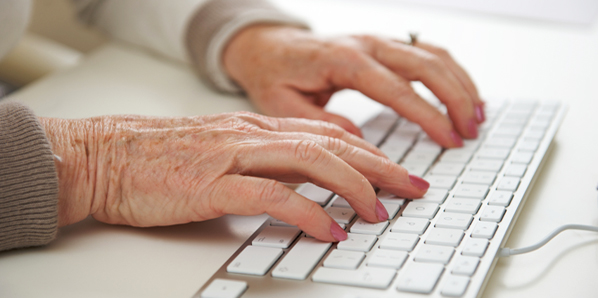Technology for Seniors: Benefits for Older Adults and their Families
Elizabeth Marques Kogan sat down with Steve Barlam from LivHome to learn about the different types of technologies available for seniors and the pros and cons associated with technology for seniors and their caregivers.
Can you describe the type of technology that is out there for seniors?
There is a lot of technology out there for older adults. Generally the categories the products fall into are: Communication, health and wellness, security, life learning, and fun. Many of these are stand-alone solutions serving a single purpose, but their use can be cumbersome as families try to cobble together different products for different purposes.
At LivHOME we took the time to identify a single product combining a wide range of solutions that can be customized with ease to the senior’s needs and preferences. The technology we use centers around a touchscreen computer that is easy and fun to use. The software and applications that have been integrated into the touch screen computer helps seniors stay better connected to their family members; helps keep seniors safe through the use of remote monitoring of motion and temperature sensors; promotes health and wellness through the use of biometric devices; engages seniors in fun activities, games and cognitively stimulating endeavors; and provides reminders for medications and important appointments.
READ MORE with Seven Tips for Choosing Senior-Friendly Software
How can this technology help to benefit seniors and their families?
This technology is of great benefit to adult children, because many adult children have numerous concerns about their senior parents that can’t usually be addressed unless they are there with them. For example: Is my parent eating regularly? Is my parent taking their medication as prescribed? Did my parent remember to write down his or her blood pressure reading, weight or blood sugar level? What would happen if my mother fell and how would anyone know? Is my dad getting out of bed or out his easy chair during the day? And the list goes on….
The CareMonitor technology system brings tremendous peace of mind, answering these questions through the use of motion sensors that can be placed in various locations including the refrigerator to monitor activities releated to these questions. Simple rule-based alerts can then be set up. For example: “If no motion is detected between 7 AM and 10 AM, send a text to the senior’s daughter and geriatric care manager to alert them.”
The integrated personal emergency response system can also help in the event that the senior falls.
Biometric devices could be added, too: Glucometer, Blood Pressure Monitor, Weight Scale, Pulse Oximeter. These can also track the readings, and the date and time they were taken. An alert could go out only if the senior did not use the device during a set time frame. This would allow his or her children to only call in in the event that one of the readings isn’t taken and prevents him/her from having to remind the senior proactively on a daily basis. (E.g., prevents nagging such as, “Mom, did you remember to take your blood sugar reading today?”) Reducing this “nagging” dynamic the relationship between seniors and their adult children.
In addition, there are pressure sensitive mats that can detect whether someone has gotten into bed, gotten out, and how long they have been there.
There are equally great benefits to seniors. The system is fun to use, easy to use, and allows the senior to stay independent longer—our clients love this. One example is Skype video calls, allowing the senior to stay better connected to their out-of-town family. Another is photo sharing: children and grandchildren can download photos to the unit with ease, including from their FaceBook account. Seniors like to stay current and connected, and this system also lets them do so via Web surfing. The touchscreen is customized to the preferences of the senior. It makes selected web sites easy to access.
Finally, the system allows a senior’s family and care manager to easily download TV, music and video clips. For example, YouTube clips of the Rat Pack, big band orchestras, episodes of old television shows, etc…
READ MORE on Accessible Technology for the Elderly and Disabled
Do you have any recommendations on how senior communities can maintain that balance of technology and human touch?
It’s not enough to provide technology: the key is integrating it with the human touch. This is similar to buying gym equipment or even joining a gym: Those who are the most successful generally start out with or continue to use a personal trainer. The human touch provides the senior with 2 critical functions: 1) Training, orientation, support; and 2) The monitoring of the data—analyzing, and recommending interventions over time. We firmly believe that we would be remiss if we only provided the technology for the family to manage on their own. (See next question.)
How can the techology(ies) be effectively managed?
Having a professional involved who is looking in on the system daily, monitoring the data is key. For example, the professional can see patterns of behavior and be proactive about their implications, providing expert advice such as recommendations to help reduce risk and enhance quality of life. Both professionals and family members should also check in regularly, provide the necessary support and communicate with one another about the best course of action for any given situation.
WATCH Comfort Life TV: How Retirement Homes Help Seniors Become Tech Savvy
How can technology benefit seniors losing human touch?
Seniors who are compromised physically can still attend important family events “virtually” through the use of video conferencing services. A retired fine arts professor confined to his bed due to Parkinson’s disease was able to take virtual tours of famous art museums from around the world. He was also able to receive photos from friends and family, and have breakfast together with his granddaughter across the country via Skype.
When seniors live far from their families or don’t have home care, the virtual connection with caregivers and loved-ones is vital to both physical and mental health.
* * * * *
What benefits have you noticed from the use of technology? Share your thoughts in the Comments section below.


